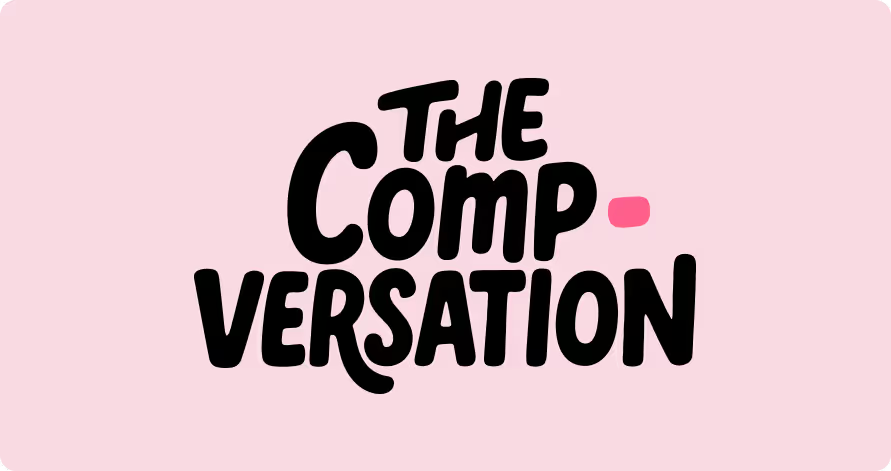Long live the annual review!
We’re a few weeks away from the most wonderful time of the year: annual review season. That’s why I’m kicking off this newsletter mini-series on transparency in HR with this topic.
Well… that, and the fact that the pay transparency spotlight, currently focused on pay (thanks to the incoming EU Directive), is shifting more and more towards annual performance reviews and the ratings they produce.
This is hardly surprising: as I mentioned in the last issue of this newsletter, transparency is quickly spreading through all areas of HR. And after all, it’s hard to imagine a truly transparent pay system built on opaque foundations. Whatever criteria companies use to set salaries, they need to be able to prove those criteria are fair and objective.
And the most common one? Performance. Employers want to reward their teams based on their impact on the organisation. In most cases, this is measured through the annual review.
Here’s the thing, though: that process needs to be as robust, objective and equitable as possible. And that’s not always the case…
Can we eliminate the problem altogether?
During my time as an HR leader, I always had a love-hate relationship with the annual performance review. It’s the point in the year when we can have the biggest impact on the business as a whole. But it’s also a period when our workload goes through the roof. And, with HR teams already at risk of burnout, that’s not something we can ignore.
More than a decade ago, annual performance reviews had earned such a bad reputation that many businesses decided to get rid of them altogether. And we’re not just talking about small companies: Adobe was one major multinational that went looking for new ways of managing performance.
In 2012, Donna Morris, Senior Vice President for Employee and Customer Experience, announced that she was scrapping this wasteful process. Adobe was spending 80,000 hours per year on annual reviews — the equivalent of 40 full-time employees.
Her solution? Check-ins: a system of continuous feedback that allows employees to adjust their performance in real time, without burdening HR with a bureaucratic and time-consuming process.
I definitely see the benefit of abolishing rigid grading systems that make employees feel like they’re back at school. Especially when they’re built on ‘forced’ distributions that require a certain number of low ratings. These only breed discouragement and frustration.
But companies still need criteria to help them decide who gets a raise. How do those that operate without a formal performance rating system manage?
In my experience, I’ve seen two main solutions — neither of which offer the fairness and objectivity needed in the pay transparency era:
- Decisions are made on a discretionary basis by managers. This leaves the door open to inequity and unconscious bias. And in the pay transparency era, this will lead to frustration at best, and litigation at worst. After all, the EU Directive gives employees the right to information and requires businesses to justify their past salary decisions. What will happen if they’re not able to show these were made using objective criteria? It’s no coincidence that all the labour lawyers I’ve spoken to are anticipating an explosion in legal action once the new rules come in…
- HR asks managers to complete a ‘disguised’ rating questionnaire designed to evaluate employees. This typically involves questions like, ‘Who couldn’t you live without?’, ‘Who exceeded your expectations this quarter?’, or ‘If you had to choose only one employee on your team, who would it be?’. But this is an even shadier system than just asking managers to rate employees directly. How will these companies respond to future information requests from employees or staff representatives? Will they deny the existence of this hidden process or be forced to expose it?
In terms of transparency… we can do better.
The art of fair performance ratings
The fact is, if we want objectivity in performance ratings, some sort of rating system is essential. When we asked participants in our Compensation Summit about their approach, only 16% said they don’t use ratings to score employees’ performance.
But what should that rating system look like?
Historically, companies often started by dividing their employees into three categories:
- Below expectations
- Meeting expectations
- Exceeding expectations
24% of our respondents said they use this three-point system.
But some businesses saw a need to recognise excellence and reward top performers. So, they added a fourth level for outstanding performers (usually less than 5% of employees). In our survey, 22% of respondents said they use a four-point approach like this one.
Then there's the question of under-performers. Many managers are reluctant to give the lowest rating on a scale, since this can lead to performance improvement plans or even an exit from the company (and at the very least, no pay increase). So, many employers added an additional level for employees whose performance is just slightly below average. This allows managers to rate these employees accurately without it feeling too severe.
Today, most companies use a five-point scale — including 33% of our survey respondents. This is the system that seems to be the most popular at the moment, and the one I recommend to HR leaders.
Whichever system you choose, it’s important to ensure ratings are both consistent between different teams and aligned across the organisation. The problem is, every manager has their own way of doing things: some give everyone high ratings in the hopes of boosting satisfaction, while others pride themselves on being hard to please.
Sometimes, this leads to strange results, like a team that’s not meeting its objectives, even though each member is highly rated individually.
So, how do we make sense of this?
One solution is using a system of forced distribution. But as we’ve seen, this has many drawbacks: it encourages competition at the expense of teamwork, often undermining collaboration. In extreme cases, top performers refuse to work together for fear that a side-by-side comparison might hurt their score.
How to get it right (and wrong)
Why do managers apply rating systems so differently? There are too many reasons to count, from personality quirks to cultural differences.
I learned this the hard way when I worked in HR for an international company. Our team was tasked with implementing the first performance review process to be harmonised across the whole Group. We decided on a four-point rating scale, similar to the one I described above.
To keep things simple, we labelled the performance levels A, B, C and D. To us, this seemed like a straightforward approach that would be easy for managers to understand. To break it down: A = Exceptional, B = Above expectations, C = Meeting expectations, and D = Below expectations.
But what we didn’t realise — and couldn’t have known as a French team working in the French office of a multinational business — is that for our anglophone colleagues, this scale looked a lot like the grading system they were used to seeing at school.
They were operating from a completely different frame of reference, where a ‘C’ is a very poor grade to receive. While French managers were perfectly happy to give a ‘C’ to employees who were meeting expectations, their Anglo-Saxon counterparts stuck to As and Bs unless they were actually unhappy with the employee’s performance.
My experience with cultural differences like these highlights the importance of the calibration phase. This step ensures that managers are on the same page and that a ‘C’ means the same thing to everyone.
During my time at Criteo, we took this issue very seriously (though it has to be said that the company’s highly tech-driven culture made it particularly suited to this type of process). We implemented a highly structured, time-intensive system — but one that created a real sense of fairness and objectivity.
We organised calibration sessions with all managers, where their results could be shared and challenged. With 800 employees in total, this meant more than a week spent in calibration committees with managers every six months.
Our approach was the complete opposite of Adobe’s, even though we were responding to the same problem. Faced with an unsatisfactory performance evaluation system, they chose to eliminate it altogether, while we reinforced it. Of course, this won’t work for every organisation.
The solution to the performance evaluation puzzle depends heavily on the organisation’s size and ‘DNA’. For example, is it a multinational enterprise or a startup where all the managers can sit around the same table?
Is it an engineering-led company that favours strict, codified processes, or a sales-driven business where speed and flexibility rule and numbers speak for themselves?
Every company has its own way of calibrating performance ratings, but one thing is certain: in the era of transparency, a rigorous, objective system is essential if we want to ensure fair performance evaluations — and, by extension, pay decisions.
My prediction? Most of the businesses that eliminated ratings over the past ten years will eventually reverse that decision and reintroduce a rating system to guide compensation.
I’d love to hear whether you agree with this, as well as how your organisation is approaching this question.
In the meantime, I’ll be back very soon with the next issue of this mini-series!
To continue the conversation
Here’s some further reading to keep the conversation ongoing on this topic. If you’ve come across any interesting reads, feel free to send them my way!
Be not afraid of greatness ✨ Navigating a Performance Calibration — Jessica Zwaan, Medium
So, what does the calibration process actually look like in practice? I like this guide by Jessica Zwaan, which breaks down every step involved in getting a company aligned on how it evaluates performance. A must-read for practical tips.
The Performance Management Revolution — Harvard Business Review, Harvard Business Review
This 2016 article comes from a time when companies were excited about scrapping annual reviews. It offers a fascinating historical perspective on performance management – and it’s striking to see how differently transparency was viewed just eight years ago.
Summarize this article with AI
No time to read it all? Get a clear, structured, and actionable summary in one click.


.avif)

